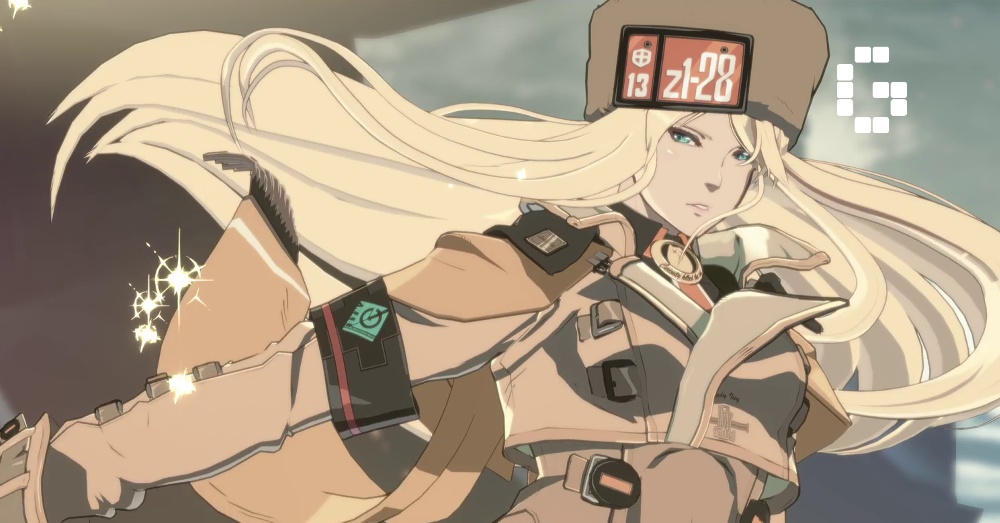Fighting games are in a weird space. To me, they’re one of the most comfortable games in my library- you literally just play one until you feel satisfied with your skillset, and then go online to be motivated to learn more.
That being said, they’re also one of the most niche genres- fighting games have a horrible reputation for being incredibly obtuse, needing high execution as well as being so PvP focused that no one who’s afraid of losing would jump in since they can’t immediately be Daigo.
Desptie the stigma though, recent years has shown the genre as a whole taking a variety of major steps to make the game, well, playable. It’s culminated this week in the annoucement for Street Fighter 6, following an incredibly stacked year for the genre. Make no mistake- we’re in the golden age of fighting games.
Make Playable Games
I’ve been incredibly vocal about the role of netcode in improving the fighting game community as a whole. Look, it’s not rocket science- people will want to play the fighting game that works. While many fighting games see a lot of couch or arcade versus play, the fact that getting that close to another human is a health hazard has made that a lot more difficult.
Combine that with the popularity of fighting game streamers and you get an obvious conclusion- people wanna play online. It’s fun.
You know what’s not fun? Bad netcode. Slowdowns because your opponent’s playing out of a McDonalds making all your inputs get swallowed up in the delay.
The fact we’re seeing so many game announcements start with “and it features rollback netcode!” is such a huge deal, especially since Japanese developers were apprehensive to it in the past.

It’s not just new titles, either- Capcom announced that they’d be giving the entire Darkstalkers series as well as freakin’ Battlebots if you could believe it the netcode too. As of this writing Blazblue Cross Tag Battle is starting up its beta to implement it, following the widely successful implementation of rollback on Centralfiction and Accent Core Plus R.
Not every developer sees things this way- the re-release for Persona 4 Arena Ultimax famously decided to skip improving the game’s netcode, but even they’re saying they’d look into it in a future update. Virtua Fighter’s reintroduction to the world was also dampened by not choosing good netcode.
It’s not just netcode, either. Fighting games are becoming way more approachable, with improved training modes and tutorials. If you want to get into fighting games, publishers and developers are realizing it’s easier to do if you make your games playable.

From things like one-button special moves a la Granblue Fantasy Versus to having really good teaching tools a la Guilty Gear Strive, it shouldn’t be an act of insight to say that making your fighting game playable leads to more people playing your fighting game.
The fact more fighting games are seeing this and implement them is a great thing- my more casual friends can just pick up a game like Strive and feel like they’re making progress, instead of going through the tomes and tomes of secondary research just to learn some basic combos.
So Many Games To Play
The direct result of this infrastructure shift is that there’s a *lot* of fighting games to play now. Skullgirls, Accent Core, Central Fiction all have communities eager to play them even if they’re not the newest games on the market, while newer releases like Guilty Gear Strive, Melty Blood Type Lumina and KOF XV are all drawing large crowds and a genuine excitement any time there’s news of it.
At this momentum, we could see an end to the days where you had to play either the newest Street Fighter or the newest Tekken if you wanted a match- while they may still outperform smaller fighting games you’ll still have a healthy enough scene for the game of your choice.

It’s not just for tournament grinders, either- as someone who casually checks out these games, my fighting game calendar puts my dating calendar to shame. Just this year we have KOF XV, Blazblue Cross Tag Battles’ rollback update, Persona 4 Arena Ultimax and DNF Duel coming out with a lot of hype surrounding them.
That’s way more fighting games to play in a single year than a lot of people probably played 5 years ago, and that’s wild.
On top of that you have the games still getting support- Guilty Gear Strive will presumably be getting another season pass after it announces their final non-Elphelt for this season, as will Melty Blood to the sonorous chorus of “where’s Neco Arc?”.
Obviously you can’t master all these games. But even if you’re just hanging out with your friends, the ability to rotate out games is a good way to stop any one game from getting stale. Just a simple “hey I heard the new character for Skuillgirls is out, wanna go check her out?” is a fun way to keep things fresh.
Every IP Gets A Fighting Game
A huge mark of the last big “Golden age” of fighting games was the sheer prevalence of IPs getting them. THat’s how we got such great kusoge as the Sailor Moon fighting game, as well as the Gundam Wing fighter and the Fist of the North Star game.
Thanks to the folks at Arc System Works, it looks like we’re in for a revival of this phase. Lots more IPs are branching out into having fighting games now- we had Granblue Fantasy Versus, Dragon Ball FighterZ, as well as the upcoming DNF Duel. Heck, we even had a Power Rangers fighting game that transcended its mobile game roots to become, well, really good.

I’ve always been of the opinion that more IPs getting their own fighting games is a good thing, because it introduces more players to a genre they might not have wanted to check out otherwise. Pokken Tournament to me is still one of the best Pokemon spinoffs, and actually got several of my non-combo-entrenched fans to check it out.
I mean, heck, Melty Blood is a fighting game based on a freaking Visual Novel. Them’s Fightin’ Herds had its roots in a My Little Pony game before it became its own thing.
Because let’s face it, “play the fighting game based on that cool thing you like” is gonna be a way better elevator pitch than “we made roman cancels really cool in this one”.
Indies Are Good, Too

Of course, it’s not just about your big Capcoms and Arc System Works. Even the smaller development games are looking nothing short of amazing nowadays, doing their level best in stopping the gentrification of the genre while also introducing new ideas to experiment with.
Tough Love Arena is free-to-play, and sports mobile controls. Fantasy Strike featured Cross-play on different platforms, something the community desperately wants in other titles, too. Them’s Fightin Herds has an alternate gametype in the Salt Mines, adding way more to their lobbies than just finding the player you think you have the best chance of beating for victory.
The fact that we even have games like this pushing the boundaries is good, because once it gets popular enough we can inevitably see bigger games improve on it with the power of more budget.
Final Round

Look, when Granblue floundered without a good offline scene thanks to the pandemic, I was worried that this was a bad sign for the FGC. Combine that with the real-world scandals around figureheads like former EVO owner Mr Wizard and within the Smash Bros community, and it looked like the FGC would just be a landmine that no publisher would want to associate with.
Despite that, the whole scene has stepped up in an amazing way- fighting games not published by SEGA are all improving their online infrastructure, and people who love fighting games are making ones with the end goal of making a fighting game they like, not just aping Street Fighter.
While we obviously won’t see this upward momentum go on forever, it’s important to acknowledge just how good it is to be a fighting game player right now.
Wan Amirul is an editor at GamerBraves, as well as a hobby-FGC player who most notably drowned at pools at EVO last year.






![[EXCLUSIVE] Taking Gundam in Bold New Directions – Interview with GQuuuuuuX Director Kazuya Tsurumaki](https://cdn.gamerbraves.com/2025/04/Kazuya-Tsurumaki_Interview_FI-1-360x180.jpg)





![[SEA Exclusive] From Shadows to Shipwrecks – Jennifer English Talks About Bringing Emotional Depth to Clair Obscur: Expedition 33](https://cdn.gamerbraves.com/2025/04/Clair-Obscur-Jennifer-English_Interview_FI-360x180.jpg)

![[EXCLUSIVE] Do the Game Interview – An Intimate Look at the Challenges of Game Development](https://cdn.gamerbraves.com/2025/04/Do-the-Game_Interview_FI-1-360x180.jpg)
![[EXCLUSIVE] Interview with the Minds Behind of Den of Wolves – 10 Chambers’ New Sci-Fi Heist FPS](https://cdn.gamerbraves.com/2025/04/Den-of-Wolves_Interview_FI-360x180.jpg)








![[GUIDE] Finding Alma’s Lost Glasses in The Apple of Her Eye Side Quest](https://cdn.gamerbraves.com/2025/04/Alma-Glasses-Quest_Gudie_FI-360x180.jpg)



![[GUIDE] Farming Nightflower Pollen in Monster Hunter Wilds](https://cdn.gamerbraves.com/2025/03/MHWilds-Pollen_Guide_FI-360x180.jpg)